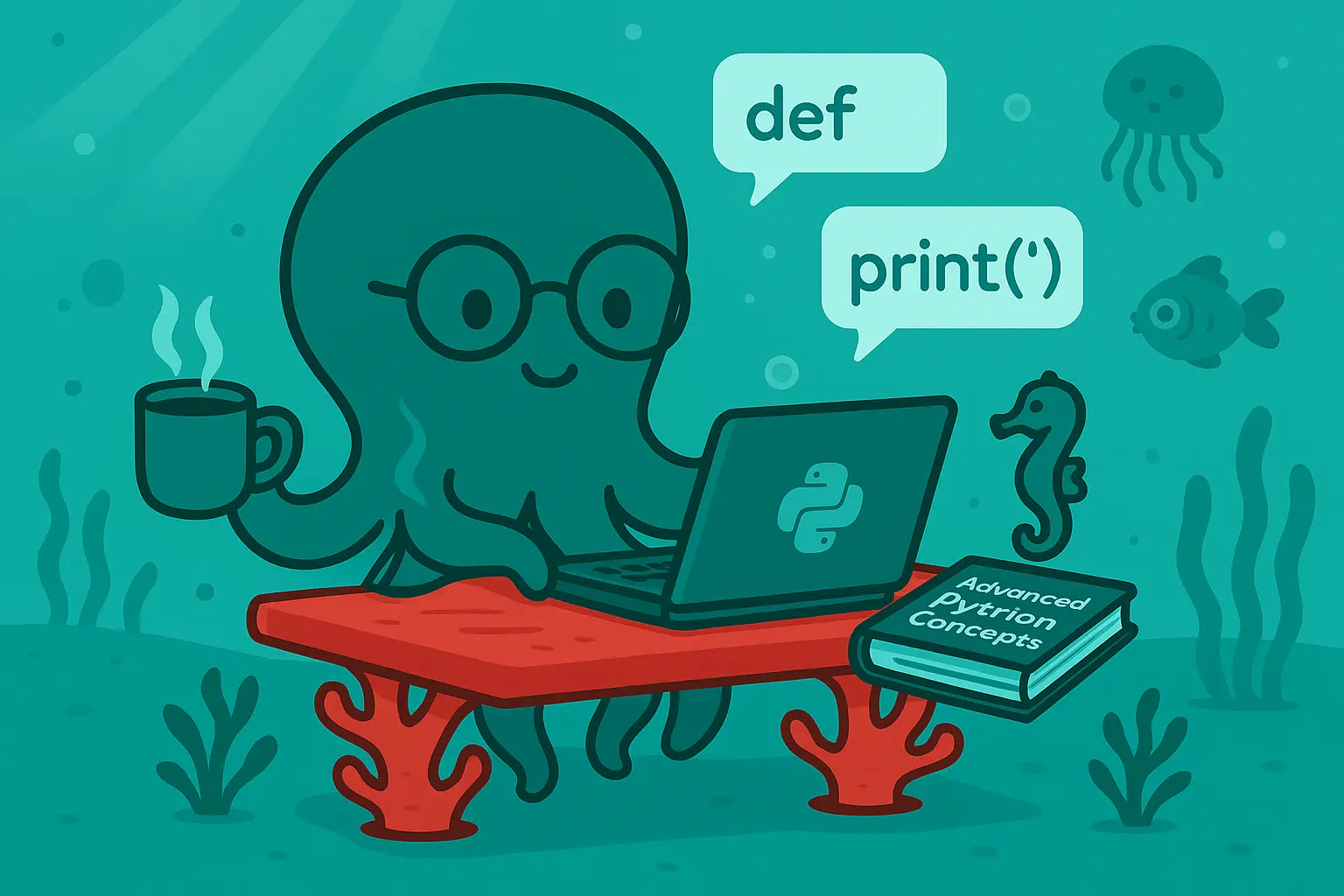10 ChatGPT Prompts for Python Coders
Python makes things possible. ChatGPT makes them faster.
Whether you’re debugging, building, learning, or documenting — these prompts help you write better code, fix faster, and stop searching Stack Overflow for the same question again.
Use them as your coding sidekick whenever you hit a wall or want to move quicker.
1. Prompts to Generate a Python Function From Scratch
#CONTEXT:
You know what the function should do — you just want to see it written out.
#GOAL:
Write a clean, reusable Python function based on my description.
#RESPONSE GUIDELINES:
• Task: [insert what the function should do]
• Input type: [insert: string, list, dict, etc.]
• Expected output: [insert example]
• Add inline comments
• Optional: include basic test cases
#OUTPUT:
A ready-to-use Python function with clear logic.2. Prompts to Fix a Bug in Your Python Code
#CONTEXT:
Your code throws an error or gives the wrong output — and you need help spotting the issue.
#GOAL:
Find and fix the bug in this snippet.
#RESPONSE GUIDELINES:
• Paste your code: [insert]
• Describe the error or unexpected behavior
• Ask for a fix and explanation
• Keep the response simple and focused
• Optional: suggest a cleaner version
#OUTPUT:
A working version of the code, plus a quick explanation.3. Prompts to Simplify a Long Script
#CONTEXT:
Your script works — but it’s messy, repetitive, or hard to maintain.
#GOAL:
Refactor for readability and simplicity.
#RESPONSE GUIDELINES:
• Paste your script: [insert code]
• Ask to reduce repetition, add functions, and clean logic
• Optional: request docstrings and better variable names
• Avoid overengineering — keep it beginner-friendly
#OUTPUT:
A cleaner, modular version of the original code.4. Prompts to Learn a New Python Library
#CONTEXT:
You want to get up to speed with a new library fast — and skip the long docs.
#GOAL:
Learn what this library does and how to use it.
#RESPONSE GUIDELINES:
• Library: [insert name: pandas, requests, matplotlib, etc.]
• Use case: [insert goal or problem]
• Ask for an intro, key functions, and short examples
• Optional: request a cheat sheet format
#OUTPUT:
A beginner-friendly guide to the library with quick code samples.5. Prompts to Explain Python Code You Don’t Understand
#CONTEXT:
You copied or inherited some code — and need to know what it actually does.
#GOAL:
Break down unfamiliar code into plain English.
#RESPONSE GUIDELINES:
• Paste the code: [insert]
• Ask for a line-by-line or block-level explanation
• Optional: request simplified pseudocode version
• Avoid over-complicated terminology
#OUTPUT:
A clear explanation of what the code does and why.6. Prompts to Write Unit Tests for Python Code
#CONTEXT:
You wrote a function — now you want to test it without writing test logic from scratch.
#GOAL:
Create basic unit tests using unittest or pytest.
#RESPONSE GUIDELINES:
• Paste the function: [insert code]
• Testing tool: [insert: unittest or pytest]
• Add at least 3 test cases with expected output
• Format with import statements and test runner setup
#OUTPUT:
A test file I can run immediately to validate my function.7. Prompts to Convert Logic Into Python Code
#CONTEXT:
You wrote out a rough idea in plain English — now you need it turned into working Python.
#GOAL:
Translate logic steps into a working script.
#RESPONSE GUIDELINES:
• My logic: [insert step-by-step idea]
• Output format: [insert: print, return list, write file, etc.]
• Ask for comments to explain steps
• Optional: request a scalable structure or reusable function
#OUTPUT:
A fully written script that matches my logic.8. Prompts to Optimize for Speed or Memory
#CONTEXT:
Your code works — but you suspect it could run faster or use less memory.
#GOAL:
Optimize the performance of this code.
#RESPONSE GUIDELINES:
• Paste the code: [insert]
• Tell me the data size or where it feels slow
• Ask for a faster or more memory-efficient version
• Optional: include profiling suggestions
#OUTPUT:
An optimized version of the code, with an explanation of the changes.9. Prompts to Document Code for Hand-Off
10. Prompts to Build a Mini Project Fast
#CONTEXT:
You want a small, fun project to build or showcase — but don’t want to start from scratch.
#GOAL:
Get a complete, beginner-to-intermediate project idea with code.
#RESPONSE GUIDELINES:
• Topic: [insert: automation, web scraping, finance, game, etc.]
• Level: [insert: beginner, intermediate]
• Ask for a step-by-step plan and code snippets
• Optional: include comments and 1 idea to expand the project
#OUTPUT:
A Python mini-project with working code I can build and share.How to Use These Prompts Effectively
• Use real code
Don’t ask vague questions — give ChatGPT your exact logic or bug.
• Ask follow-up questions
Say “optimize this,” “add error handling,” or “rewrite for beginners.”
• Mix and stack
Write the code with one prompt, test it with another, document it with a third.
• Use it while learning
Ask ChatGPT to explain code you don’t get — then ask it to quiz you.
• Don’t copy and paste blindly
Always run and understand the code before using it in real projects.
Conclusion / Wrap-Up
Python is powerful. ChatGPT makes it faster.
These prompts help you think, code, and build with less friction — so you can go from stuck to shipping in minutes.
Whether you’re new or pro, these shortcuts save time and keep your focus where it should be: on solving real problems.







